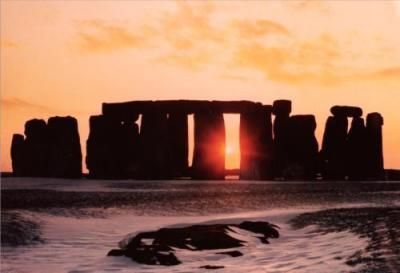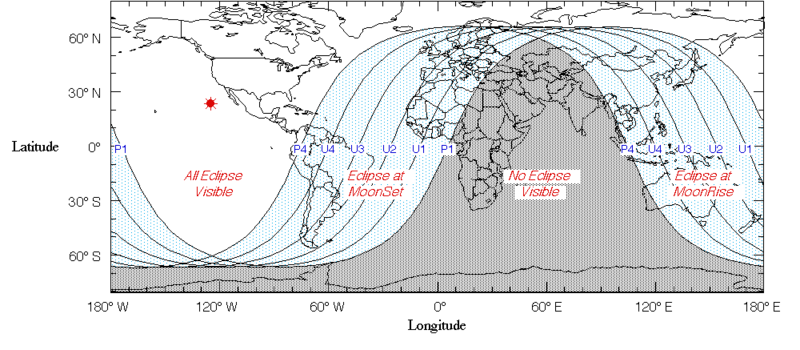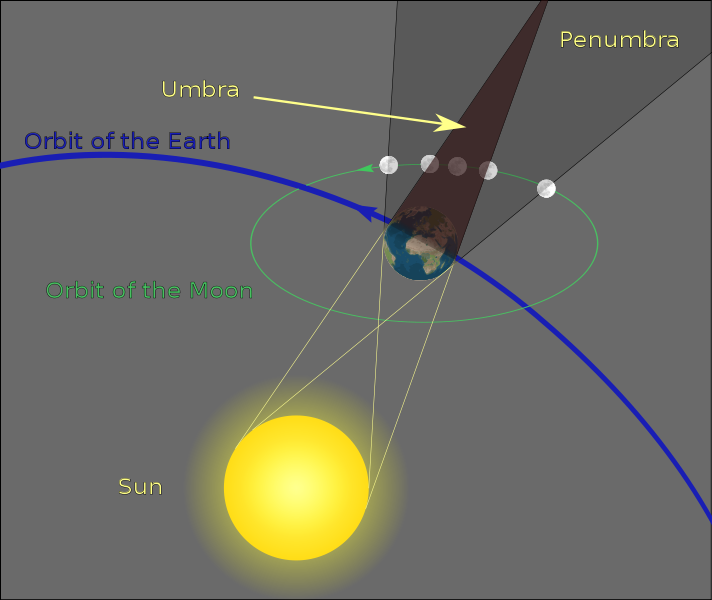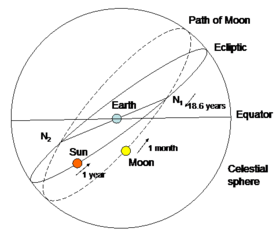There a full moon tonight, the Snow Moon, appropriately, for those of us In The Northeast.. Nothing unusual about that except that there is also a lunar eclipse and a comet Turn this evening into a cosmic experience — a full moon, lunar eclipse and the chance to see a pale green comet as it streaks …
Tag: lunar eclipse
Sep 16 2016
Harvest Moon 2016
The end of summer is nearing and the last full moon of the season will rise tonight at 7:10 PM EDT. The full moon closest to the Autumnal Equinox is called the Harvest Moon. This year the equinox falls on September 22 at 10:21 AM EDT. This is one of the brightest moons which provides …
Sep 27 2015
The Super Blood Moon
Tonight most of North America, especially the east coast, will enjoy the site of a full lunar eclipse. The full moon of September is also the Harvest Moon, the full moon closest to the Vernal Equinox. It’s also a super moon, when the moon’s closest to the earth in its orbit, thus the moon will appear brighter and larger than usual. Because of its proximity during the eclipse, the moon will take on a reddish hue as the earth’s shadow passes across its surface. This is known as a “blood moon.” This is the fourth blood moon over the last 2 years which is called a “tetrad” in astronomical circles. The last time this occurred was in 1982 and will not happen again until 2033.
Needless to say, the event has also brought out the religious fringes, who believe the event is a signal for the end of time. However, according to NASA, there is no current threat of the earth being destroyed by a comet or asteroid for the “next several hundred years.”
For those of you who are camera buffs, Huffington Post Science has some helpful tricks for photographing tonight eclipse
Smartphones have made it easy to capture all sorts of fleeting moments — from a seal riding a whale to the pontiff gliding past in his popemobile.
But if you’re hoping to capture an Instagram-perfect shot of this weekend’s supermoon lunar eclipse, it will take a bit of preparation. After all, you’ll be shooting a darkened moon against the night sky. [..]
Keep your camera steady and your exposure long.
Whether you’re using a smartphone, a point-and-shoot or a DSLR, keeping it steady is essential. As Andreo explains, “Taking photos at night almost always drives up the exposure time, which means you need a stable tripod to mount your camera to in order to keep your pictures from turning out blurry.” If you don’t have a tripod, try resting your camera on a stool, or just try this hack that uses a piece of string.
Once your lens is steady, long exposure will help capture details of the moon’s surface despite the darkness. [..]
Get some magnification.
There are two kinds of zoom. One is desirable for this purpose, and the other is not. With a point-and-shoot camera, zoom until your lens is fully extended toward your subject. But then stop. After the lens is fully extended, your camera switches over to ‘digital zoom’ — which makes your photo look pixelated. It “just crops into your picture to make your subject take up more of the frame, but it isn’t true telephoto,” Leuchter explains. [..]
Pay attention to composition.
Unless you’re able to capture all the tiny details on the surface of the moon, you’ll need other objects in the shot to make it interesting. Snap while the moon is low on the horizon, and “try to find interesting objects to juxtapose with the full moon, like shooting through trees, or using silhouettes and other objects to show size contrast,” says Gerard. [..]
Use a self-timer
Sometimes you set up the perfect shot, but the act of actually pressing the button to snap the picture ruins it. A self-timer allows you to take a hands-off shot — you can even download an app that does it for you! Gerard explains that “using a self-timing feature helps to prevent vibrations in the camera by allowing it to settle before it takes the picture.”
Moon rise in the East at 6:36 p.m. The first shadow on the moon’s “face” will begin around 8:11 p.m. However, the total eclipse starts at 10:11 p.m. and peak at 10:47 p.m. The process then reverses itself and the moon will be back in full view after midnight.
Check your local paper for community events for watching the eclipse. If the weather is overcast in your area, you can watch it here with NASA starting at 8 PM EDT, or you can join us here at 8 PM.
Apr 04 2015
A Short Total Eclipse of the Moon
If you’re up early enough, about an hour before sunrise, you might want to look to the sky.
On Saturday morning, April 4, 2015 not long before sunrise, the bright full moon over North America should turn a lovely shade of celestial red during a total lunar eclipse.
The lunar eclipse will be visible from all parts of the United States. Eastern North America and western South America can see beginning stages of the partial umbral eclipse low in the west before sunrise April 4, whereas middle Asia (India, western China, mid-Asian Russia) can view the ending stages of the partial umbral eclipse low in the east after sunset April 4. Greenland, Iceland, Europe, Africa and the Middle East won’t see this eclipse at all. A world map of eclipse visibility is available here. The total eclipse will last only five minutes.
This eclipse marks the third in a series of four lunar eclipses in a row, known as a “tetrad.” The first in the series occurred on April 15, 2014, with the second in the tetrad of eclipses in September of 2014, and the final will be September 28, 2015.
NASA’s Marshall Space Flight Center will provide a livestream.
Timeline of eclipse on April 4
Lunar Eclipse, April 4, 2015 Eastern Daylight Time, *a.m.)
Partial eclipse begins 6:16 EDT
Totality begins 7:58 EDT
Greatest eclipse 8:00 EDT
Totality ends 8:03 EDT
Partial eclipse ends 9:45 EDT
Because the the moon can look red during an eclipse, it is sometimes called a “Blood Moon.” The April full moon is often called the “Pink Moon”:
The wild ground phlox is one of the earliest widespread flowers of the spring. Other names for this moon were the Full Sprouting Grass Moon, the Egg Moon and – among coastal tribes – the Full Fish Moon, when the shad came upstream to spawn.
Dec 21 2010
Winter Solstice

The Winter Solstice arrives December 21 at 1838 hours, The Moon will be bright and full having passed though a full eclipse in the waning hours of Autumn here on the East Coast of North America. An event that last occurred in 1638, 372 years ago.
The Winter Solstice is a special night for those who practice the craft. In old Europe, it was known as Yule, from the Norse, Jul, meaning wheel. It is one of the eight holidays, or Sabbats, that are held sacred by Wiccans and Pagans around the world. It the longest night of the year, mid-winter. We decorate our homes with red, green and white, holly, ivy, evergreen and pine cones. We honor the solar year with light. There is food roasts and stews and winter vegetables and sweets, chocolate and peppermint candy, apples and oranges and sweet breads. Of course there will be wine and beers, some made by friends who will join the festivities.
This year we will have two nights of celebration, the night of the eclipse, we’ll gather around the fire in the early morning hours and marvel at the orange glowing moon, drinking hot cocoa and hot buttered rum. We’ll sing and dance and laugh away the darkness and cold. Tomorrow we’ll finish cooking the food for the feast to celebrate the passing of another years and the coming of Spring and rebirth. The fire started the night before will have been kept burning and again we will join together with family and friends, remembering the old year and planning for the new one coming as the day begin to lengthen.
Merry Yule, everyone.
Dec 19 2010
More Eclipses
|
The first total lunar eclipse in nearly three years will be visible this From the Wikipedia
|
|||||||||||||||||||||||||||||||||||||||||||||
| At the points where the full Moon crosses the ecliptic a lunar eclipse can occur. Like solar eclipses there may be between 2 and 5 lunar eclipses per year. There are three types of lunar eclipses. Penumbral, partial, and
|
Unfortunately, the weather seems to be taking a Republican bent and will
not cooperate over the 20th/21st.
Again thanks for your time. I look forward to your comments and critiques
below.




Recent Comments